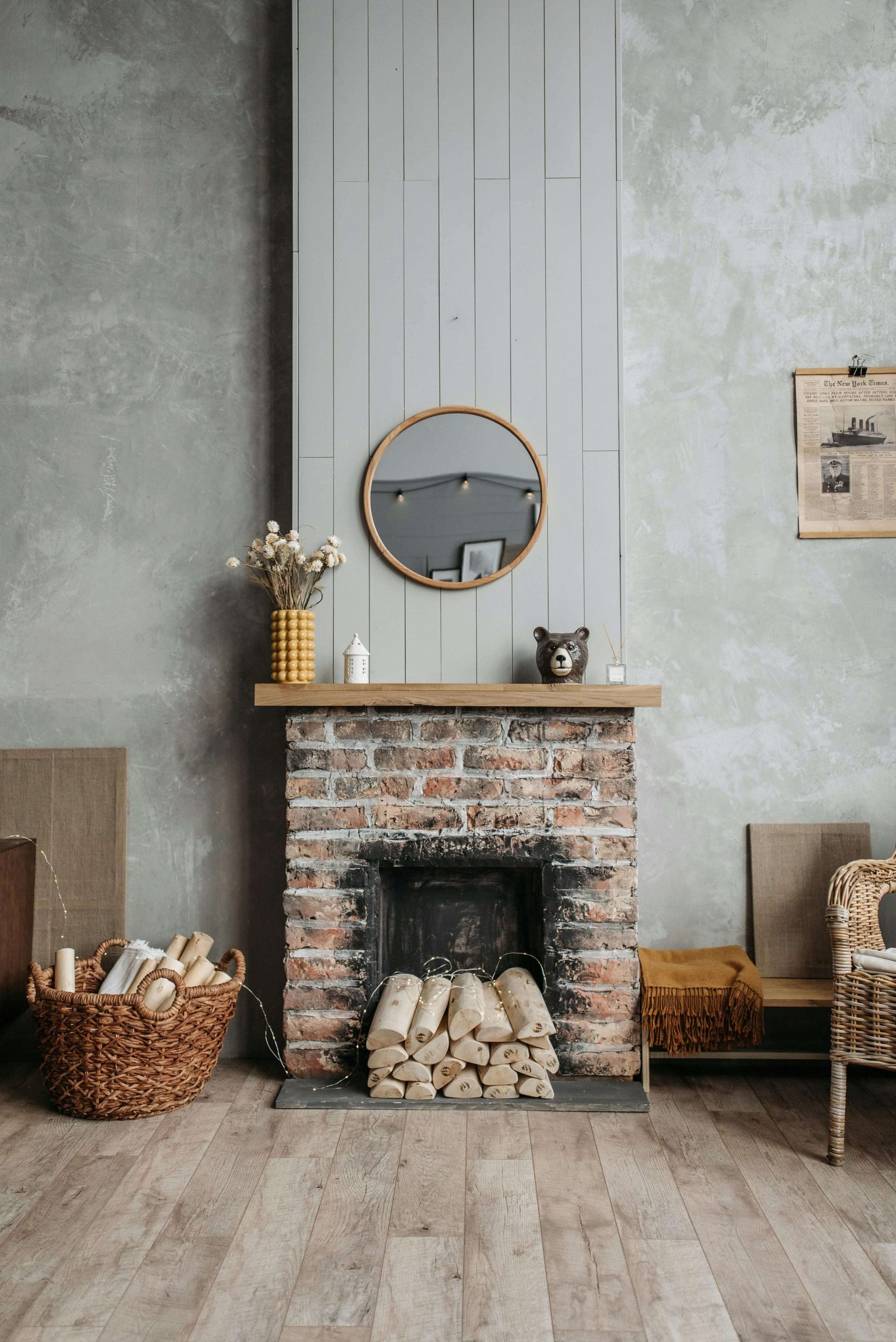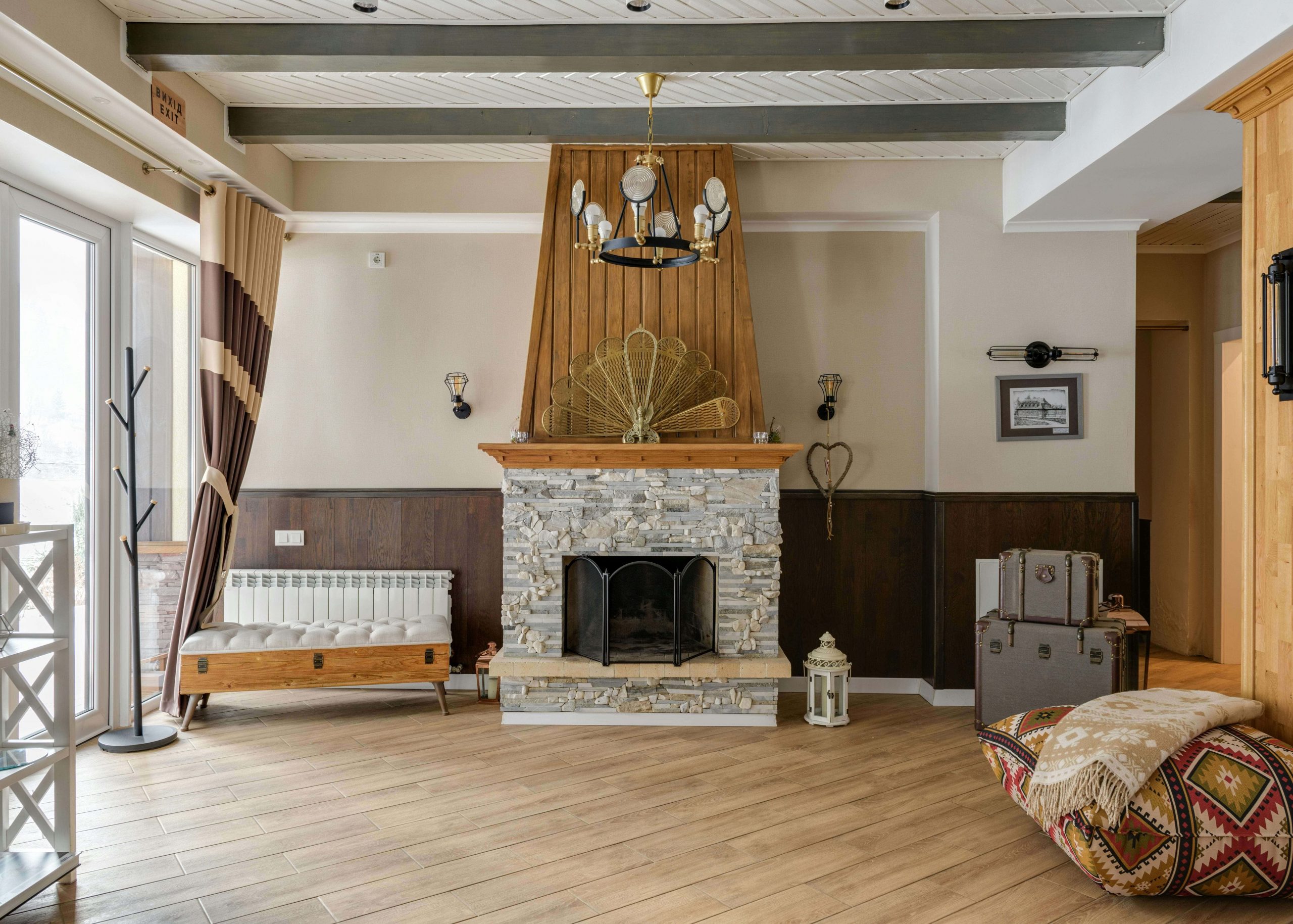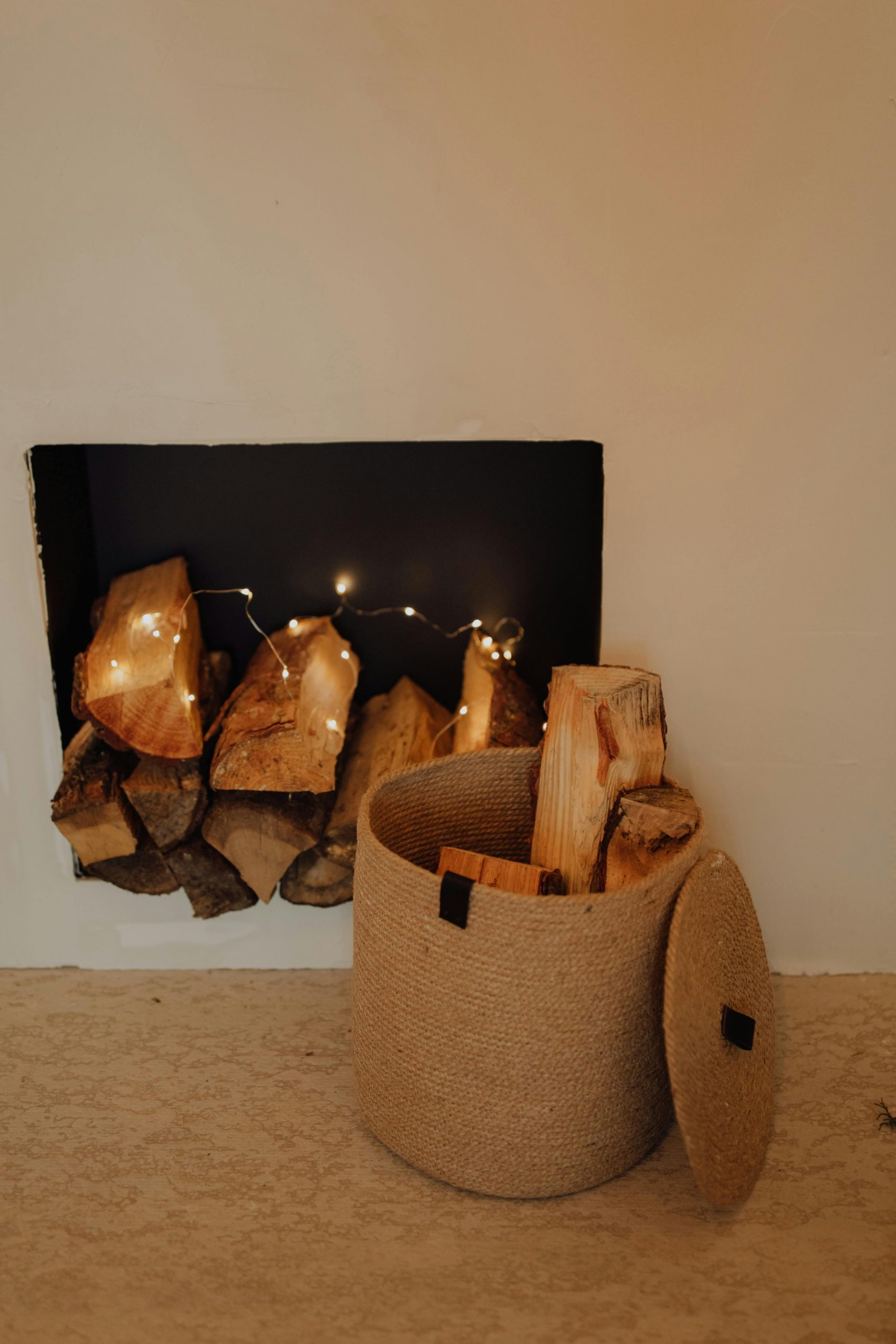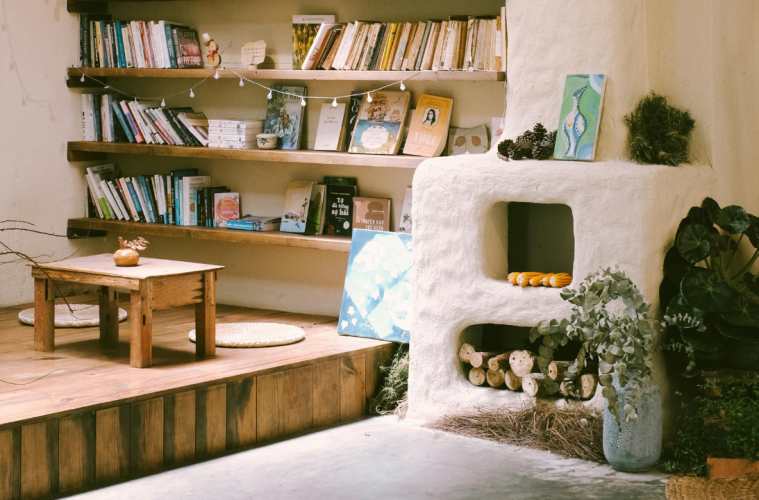Dust off your fireplace and get it ready to be used throughout winter.
There’s nothing like warming up in front of a cosy fire during the cold months and by following these easy tips, you can get your fireplace ready for use throughout winter.
How to clean your fireplace for use in winter:
1. Clear clutter
Your possessions accumulate around the fireplace when you are not using it during summer: magazines, new decor you just haven’t found a home for, and other odds and ends that tend to clutter an unused space over time.
Before using your fireplace again, clear all these items away. The same goes for rugs or furnishings you may have picked up over the summer. It is also important to ensure anything flammable is clear of the hearth before you start using your fireplace again.

Pexels
2. Clean the chimney
Before lighting the first fire of the season, a thorough inspection of your chimney is recommended. Depending on what materials you burn, creosote and soot can build up over time, requiring cleaning to keep the fireplace in good condition.
GC Fires recommends cleaning once a year for regularly used fireplaces and every two years when rarely used. It’s best to hire a professional cleaning service to avoid safety issues.
3. Clean the hearth
Any solid-fuel fireplace (in other words, wood or coal) must have a hearth as per National Building Regulations. For the hearth to do it’s job, it needs to be completely free of combustible materials. When cleaning, clear away ashes and debris from previous fires and make sure your firewood is stored in a safe area.
4. Do gas maintenance
Gas fireplaces don’t need the same level of cleaning as wood-burning fireplaces. However, they do need to be serviced annually and checked for leaks and safety concerns. You’ll need a professional for this task – a gas installer certified by the Liquefied Petroleum Gas Association of South Africa (LPGSA).

Pexels
5. Stock up on fuel
You should also prepare for future fires throughout the season by building up a decent supply of fuel. There is nothing worse than going to start a fire on a cool evening, only to find you’ve run out of firewood.
Start stocking up now and store the wood in a dry place to maintain its quality. If your fireplace uses gas, check your supply and stock up if needed.

Pexels
The pros and cons of having a fireplace:
Ambience: A fireplace adds a timeless charm to any home, creating a warm, inviting atmosphere that is perfect for cosy gatherings.
Cost-efficient heating: Wood-burning fireplaces can be a cost-effective way to supplement your home heating during the colder months.
Off-the-grid: Having a fireplace provides heat independent of electricity for use during frequent power outages.
Environmental impact: Traditional fireplaces contribute to pollution, emitting particulate matter and potentially harmful gases. Eco-friendly alternatives are recommended to reduce impact.
Maintenance: Regular cleaning and maintenance are essential for the safe and efficient operation of a fireplace.
ALSO SEE: TOP 4-BUDGET FRIENDLY HEATING SOLUTIONS FOR WINTER
Feature image: Pexels
A version of this article was originally published in the Garden&Home March 2024 print issue.

